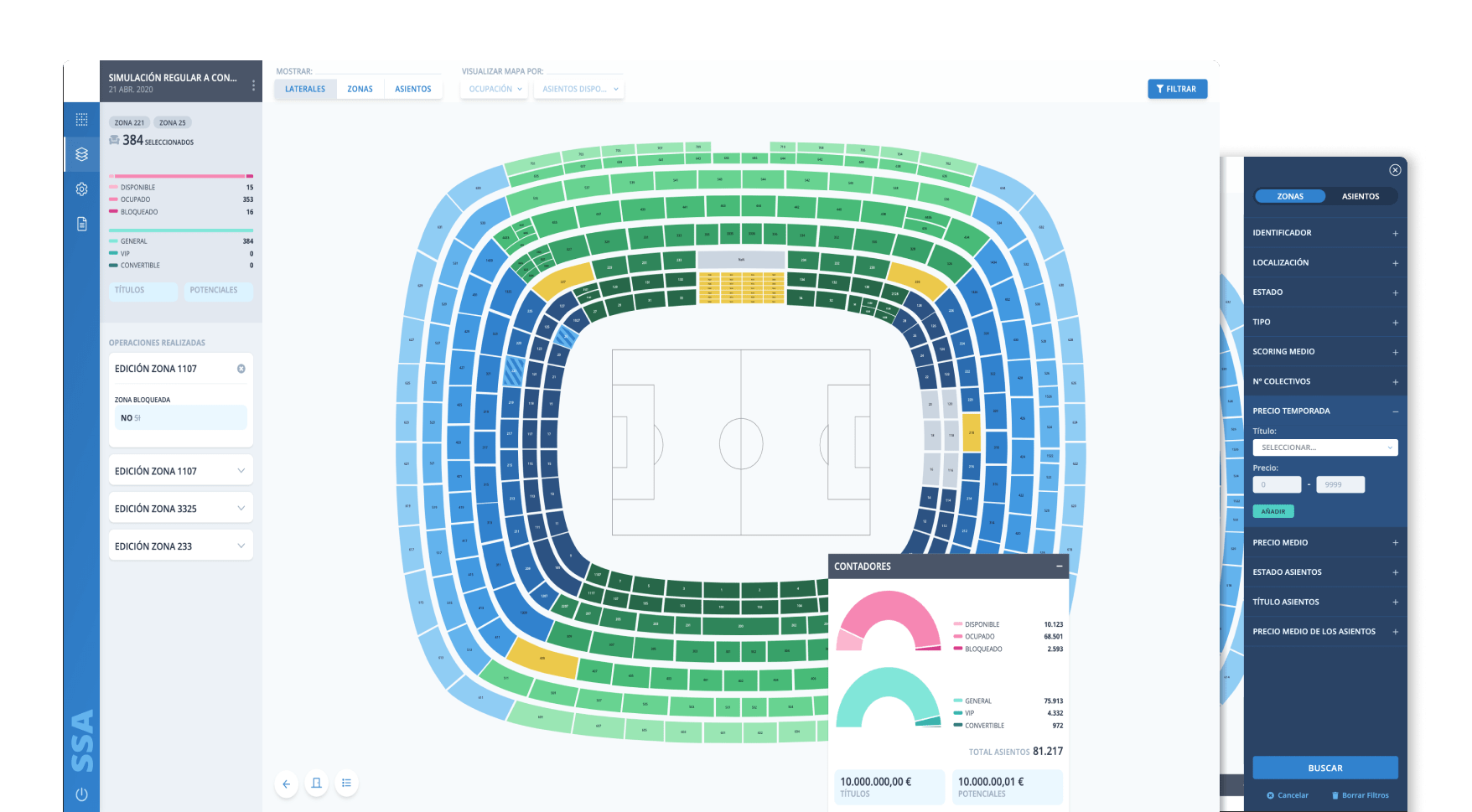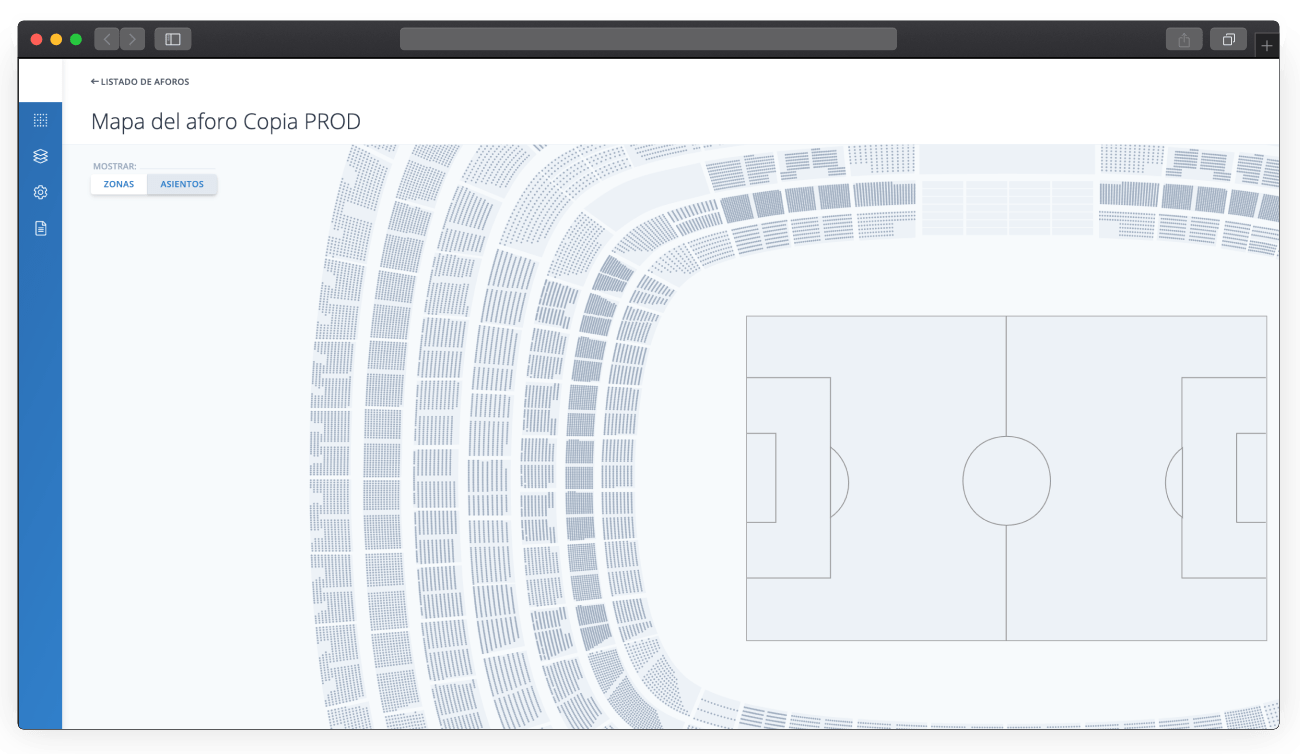Real Madrid
Real Madrid Club de Fútbol, commonly referred to as Real Madrid, is a Spanish professional football club based in Madrid who currently play in La Liga.

Managing stadium capacity during maintenance and partial reconstruction is a complex task that requires precise planning and execution. To make this process easier, our team developed a web-only interface in collaboration with Spanish consultancy Everis. This project was carried out between 2019 and 2020, with the aim of providing a simple and effective solution for managing stadium capacity during maintenance and reconstruction projects.
Our previous successful project with La Liga LFP was instrumental in our collaboration with Everis. This joint proposal allowed us to work together and build a custom application that met all the specific requirements of our client. We were responsible for the whole architecture and development of the application, using Node.js (NestJS) for the backend and Angular for the frontend.
With our previous experience working for La Liga (LFP), we were able to provide outstanding development pace in a project with lots of constraints coming from multiple stakeholders. Our team handled both the front- and the back-end development for this extremely complex platform with a heavy load on the data visualisation side.

Project tech stack
Node.js
Node.js is a back-end JavaScript runtime environment, runs on the V8 JavaScript Engine, and executes JavaScript code outside a web browser.Angular
TypeScript-based, free and open-source web application framework led by Google and by a community of individuals and corporations.SQL Server
Microsoft SQL Server is a proprietary relational database management system developed by Microsoft.SVG Path
Low level toolkit for SVG paths transformations.
One of the key challenges of the project was the need for dynamic allocation of seats in the stadium. To address this issue, we used SVG paths, a scalable vector graphics format that allowed us to create dynamic visualisations of the stadium and its seating arrangements. The project included a lot of visualisation layers and screens, which made it easier for our clients to manage the stadium capacity and make informed decisions during the maintenance and reconstruction process.